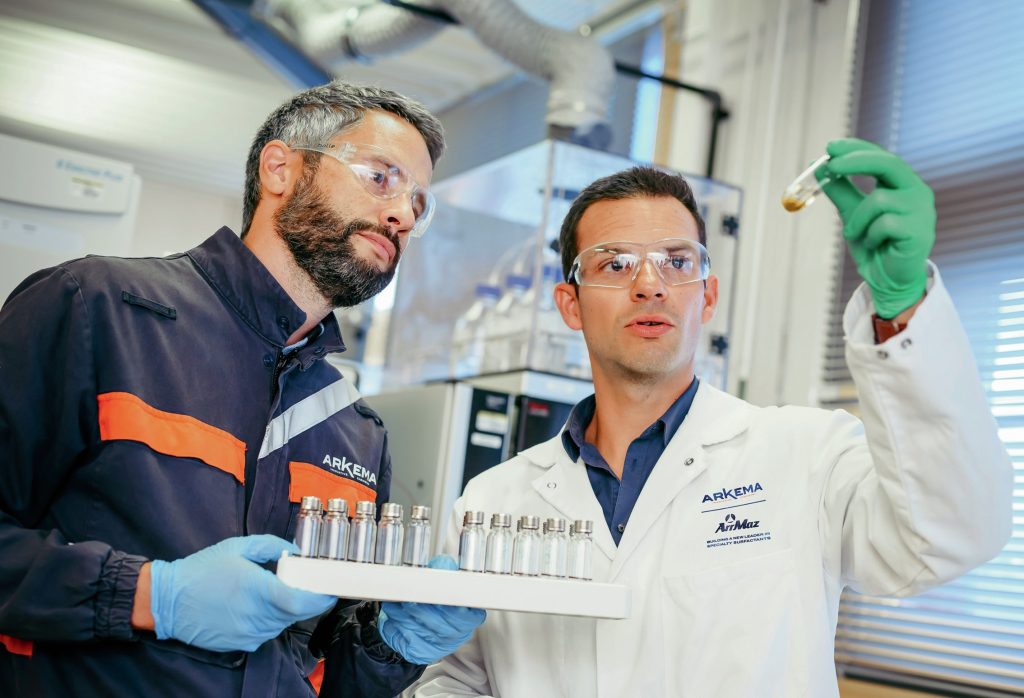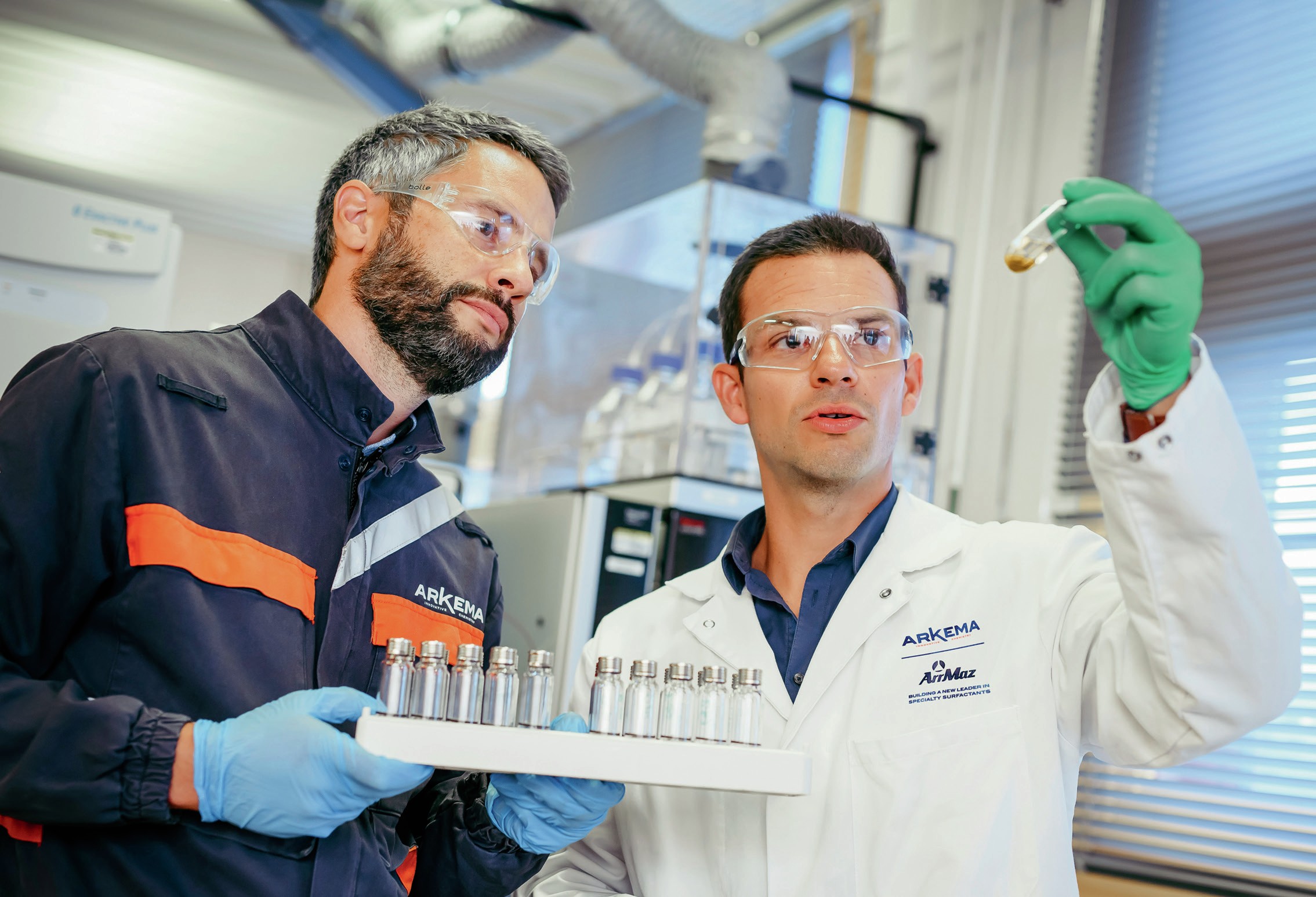Fertilizer International 500 Jan-Feb 2021

31 January 2021
Is your fertilizer coating sustainable?
FERTILIZER COATINGS
Is your fertilizer coating sustainable?
Fertilizer coatings play an integral role in minimising the degradation of fertilizers during transport, handling and storage. Increasingly, customers also want to know if the coatings they buy are sustainable too. But what exactly is a sustainable fertilizer coating – and how can its sustainability be properly defined and measured? Lucas Moore, director of coatings technology at Arkema-ArrMaz, weighs up these thorny questions and provides some clear-cut answers.

With the world’s growing population raising demand for food, the fertilizer industry is finding new ways to utilise our limited natural resources responsibly and sustainably. To meet industry needs, many fertilizer coatings manufacturers have developed new and innovative products that are marketed as sustainable. But how can you be sure that a fertilizer coating is truly sustainable and isn’t just green-washed?
Defining sustainability
According to the Oxford English Dictionary (OED), being sustainable simply means “to be capable of enduring”. The OED also defines “environmental sustainability” as “the degree to which a process or enterprise is able to be maintained or continued while avoiding the long-term depletion of natural resources”.
For products, the definition of sustainability is inextricably linked to the concept of stewardship. This requires producers to take responsibility for their products from ‘cradle-to-grave’. Stewardship encompasses where and how a product was created, where and when it will end up, and its end-of-life condition.
Therefore, taking all of the above considerations into account, to be truly sustainable, fertilizer coatings ideally need to be:
- Produced from biorenewable resources
- Designed not to bioaccumulate, i.e. should biodegrade l Developed to minimise waste generation.
- o, how can these criteria be evaluated effectively for a fertilizer coating?
Measuring fertilizer coating sustainability
At Arkema-ArrMaz, we recommend that sustainability be measured by asking critical questions that check for three key criteria:
Biorenewability: Are the raw materials used to formulate the coating produced or extracted from natural and renewable feedstocks? A resource is classed as ‘biorenewable’ if it can be replenished within a single human lifetime. Biorenewability can be evaluated using a standard ASTM D6866 method1 . This radiocarbon test detects if the naturally-occurring isotope carbon-14 (14 C) is present by comparing samples with a reference standard. Because fossil-fuel carbon does not contain any14 C, its absence verifies that the resource is not truly biorenewable.
Biodegradability: How much does the coating biodegrade in the environment? Biodegradability can be evaluated using the OECD 301 method2 . This determines biodegradation by measuring the loss of carbon dioxide (CO2 respiration). Using this method, a product is considered biodegradable if it achieves greater than 60 percent biodegradation within a 28-day interval, counting onwards from the day that 10 percent degradation is first achieved.
Waste Prevention: Does the coating help prevent or minimise waste? While ensuring product coatings are biorenewable and biodegradable are important considerations, the prevention of product losses in the supply chain is another way in which the fertilizer industry has become more environmentally sustainable. Innovations in coatings technology have supported industry sustainability by protecting fertilizer products, thereby preventing or minimising the generation of waste. To be effective, coatings need to reduce the amount of waste generated during fertilizer handling – otherwise granules can lose their integrity and strength and generate fugitive dust. Unless they are properly coated, fertilizers can also agglomerate and cake in response to changes in ambient temperature and moisture.
Dust generation and caking both lead to significant and costly fertilizer product losses and the unwanted generation of waste. Also, to be considered effective and sustainable, the dust control coatings used at a fertilizer processing plant – in addition to minimising waste – must contribute to a cleaner work environment, improve equipment efficiency, ensure worker safety, and support the development of better quality fertilizer products for farmers.
True sustainability
Once it has been established that a fertilizer coating is truly sustainable, based on an evaluation of the above criteria, it is essential to determine whether the coatings also perform well – delivering the necessary reductions in dust, caking and moisture absorption required. Coating technologies, such as those available in Arkema-ArrMaz’s DUSTROL® and Fluidiram® product lines, deliver on both sustainability and on performance.
So, in your next conversation with a coatings producer, be sure to request dust, caking and moisture absorption data to assess coating performance. But also remember to discuss the above mentioned sustainability criteria, and request appropriate data, so you can accurately evaluate if the fertilizer coating offered is truly sustainable as well.
References






